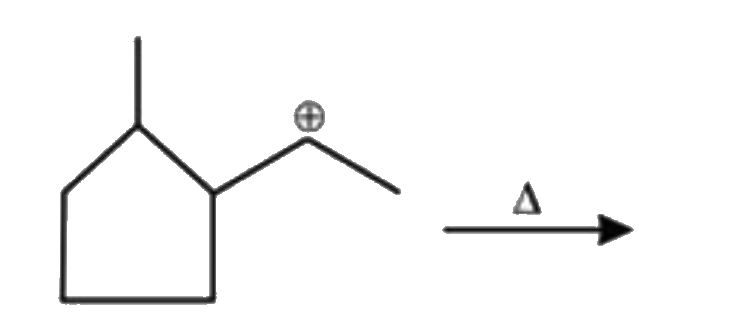The following transfonnation involves a carbocation rearrangement. The carbocation is generated by protonation of the hydroxyl group, followed by the loss of water. Which bond has to migrate in the carbocation to yield the product indicated (after the deprotonation)
 Solution in Kannada
Solution in Kannada
a
b
c
d
Topper's Solved these Questions
- BOOK - MS CHOUHANCHAPTER - ALCOHOL,ETHERS AND EPOXIDESEXERCISE - LEVEL-224videos
ALCOHOL,ETHERS AND EPOXIDES
- BOOK - MS CHOUHANCHAPTER - ALCOHOL,ETHERS AND EPOXIDESEXERCISE - SUBJECTIVE PROBLEMS1videos
ALCOHOL,ETHERS AND EPOXIDES
- BOOK - MS CHOUHANCHAPTER - 5C ALKYL HALIDES EXERCISE - LEVEL-2 (SUBJECTIVE PROBLEMS)1videos
5C ALKYL HALIDES
- BOOK - MS CHOUHANCHAPTER - ALDEHYDES AND KETONESEXERCISE - LEVEL-220videos
ALDEHYDES AND KETONES
Similar Questions
Consider the pairs ofethers, numbered I throughV, shown below. To the right of each pairis a description of reaction conditions to be applied to each. One compound of the pair will react more rapidly than the other.
Which ether of the two will be more rapidly cleaved?
Write your answer in box.
 03:13View Solution
03:13View Solution
Maximum number of moles of Ac2O consumed by reactant (A) is :03:17View Solution
X = Total number of substitution and elimination product(s). Find the value of X.03:20View SolutionSelect the best choice for example (A to L) from the examples (a to n) given below. Write your choice in the box given.

 02:23View Solution
02:23View SolutionThe following transformation involves a carbocation rearrangement. The carbocation is generated by potonation of the hydroxyl group by the lose of water. Which bond has to migrate in the carbocation to yield the product indicated (after the deprotonation) ?
05:00View SolutionThe less stable carbocation rearranges to more stable carbocation ion. During this rearrangement, the migrating atom or group leaves as a
03:12View SolutionRearrangement of Carbocations
03:16View SolutionHow many more stable carbocations are possible after rearrangement in the following carbocation.
 03:54View Solution
03:54View SolutionWhich of the following carbocations would not likely rearrange to more stable carbocation ?
44:27View SolutionWhich of the following carbocation can not undergo rearrangement ?
05:54View SolutionThe most stable carbocation after rearrangement is
03:18View SolutionRearrangement of Carbocations
03:28View SolutionRearrangement in Carbocation
03:39View SolutionHow many more stable carbocations are possible after rearrangement in the following carbocation.
03:39View SolutionWhich of the following carbocations would not likely rearrange to more stable carbocation ?
34:33View SolutionWhich of the following carbocation can not undergo rearrangement ?
37:20View Solution

